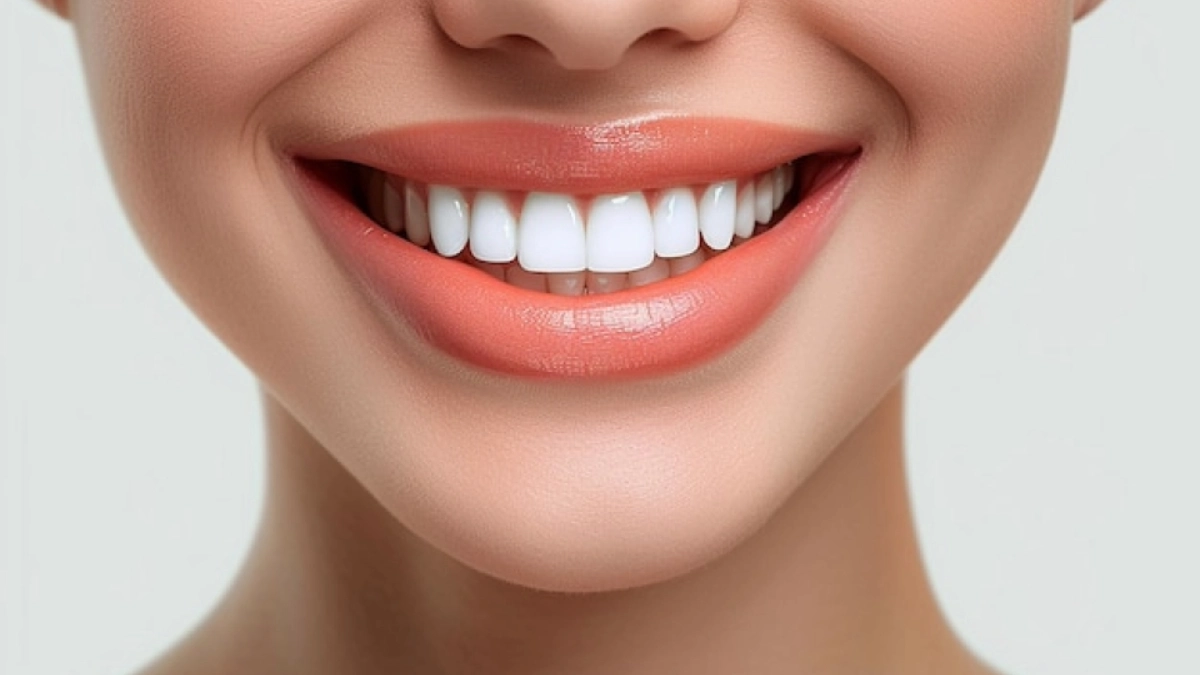What is Digital Smile Design?
Digital Smile Design (DSD) is the process of planning a personalized aesthetic smile in a digital environment using computer-aided software, based on an individual’s facial features, lip shape, tooth structure, and expressions. Unlike traditional methods, the patient can see, evaluate, and actively participate in the process before the treatment even begins, viewing an almost identical version of the final result in advance.
Thanks to this technology, more aesthetic, natural, and personalized results are achieved.
How is Digital Smile Design Done?
- Photo and Video Records: The patient’s face, smile, speech style, and expressions are recorded.
- Facial and Dental Analysis: The alignment of the teeth, gum level, lip form, and smile line are digitally analyzed.
- Simulation Creation: Using computer software, the most suitable smile for the patient’s face is designed. The ideal tooth length, shape, and alignment are determined aesthetically.
- Patient Presentation: The design is presented to the patient, and revisions are made if necessary.
- Mock-up Application (Trial Smile): With temporary materials, a prototype of the design is applied inside the mouth to test how it will look in “real time.”
- Treatment Plan Begins: After approval, permanent applications such as zirconium, Emax veneers, or bonding are performed.
Advantages of Digital Smile Design
- Personalized Design: A smile is planned to match each individual’s facial type, lip structure, and expressions.
- Preview Opportunity: Allows patients to see the result before treatment begins.
- Patient Involvement: The patient’s preferences are directly integrated into the digital plan.
- Precise Planning: Millimetric measurements minimize the risk of incompatibility.
- More Natural Results: The smile perfectly matches the face and expressions.
- Fast and Safe Process: Digital measurement systems deliver results in a short time.
Zirconium Dental Crowns
Zirconium dental treatment is an advanced crown method used to restore teeth both aesthetically and functionally. It is made from a durable, white ceramic material known as “zirconia.” It stands out aesthetically due to its natural tooth-like appearance and biologically because it contains no metal substructure, ensuring excellent compatibility with oral tissues.
Zirconium crowns are frequently preferred in anterior (front) tooth aesthetics but can also be safely used for posterior (back) teeth thanks to their strength.
Features of Zirconium Crowns
- Natural Appearance: Thanks to their light-transmitting properties, they closely resemble natural teeth and do not create an “artificial” look.
- Metal-Free: They do not cause dark discolorations along the gum line.
- Tissue-Friendly: They are biocompatible and do not cause allergic reactions in the mouth.
- Durable: They have high resistance to chewing forces.
- Color Stability: They are minimally affected by staining agents such as cigarettes, tea, or coffee.
- Long-Lasting: With proper care and regular check-ups, they can be used safely for many years.
When is Zirconium Dental Treatment Used?
- For discolored or aesthetically compromised teeth
- When large restorations are needed after decay or fractures
- In cases of misalignment where orthodontic treatment is not desired
- In bridge prostheses to replace missing teeth
- When metal-supported porcelain crowns are aesthetically insufficient
Treatment Process
- Examination & Planning: The dentist examines the mouth, listens to the patient’s aesthetic expectations, and takes digital impressions.
- Tooth Preparation: A thin layer is removed from the tooth surface to prepare it for the crown.
- Temporary Crown: Temporary crowns are placed to maintain aesthetics during the treatment process.
- Permanent Crown: The zirconium crown, prepared in specialized laboratories within a few days, is permanently bonded to the tooth with special adhesives.
This process is typically completed within 4–7 days.
Advantages of Zirconium Crowns
- Perfect compatibility with gums
- No metal-induced gray reflections on the gums
- Provides natural whiteness; color can be customized
- Does not cause cold or hot sensitivity
- Very high aesthetic success
What is the Difference Between Zirconium and Porcelain Crowns?
| Feature | Zirconium Crown | Metal-Supported Porcelain |
|---|---|---|
| Light Transmittance | Yes (natural appearance) | No (more opaque) |
| Metal Content | No | Yes |
| Aesthetic Success | High | Medium |
| Gum Compatibility | Excellent | May cause issues over time |
| Color Durability | High | Medium |
Who is Not Suitable For Zirconium Crowns?
- Individuals with teeth grinding and clenching (bruxism) problems may require the use of special protective night guards alongside the treatment.
- In cases of severe tooth decay or gum disease, these issues must be treated before zirconium crown application.






